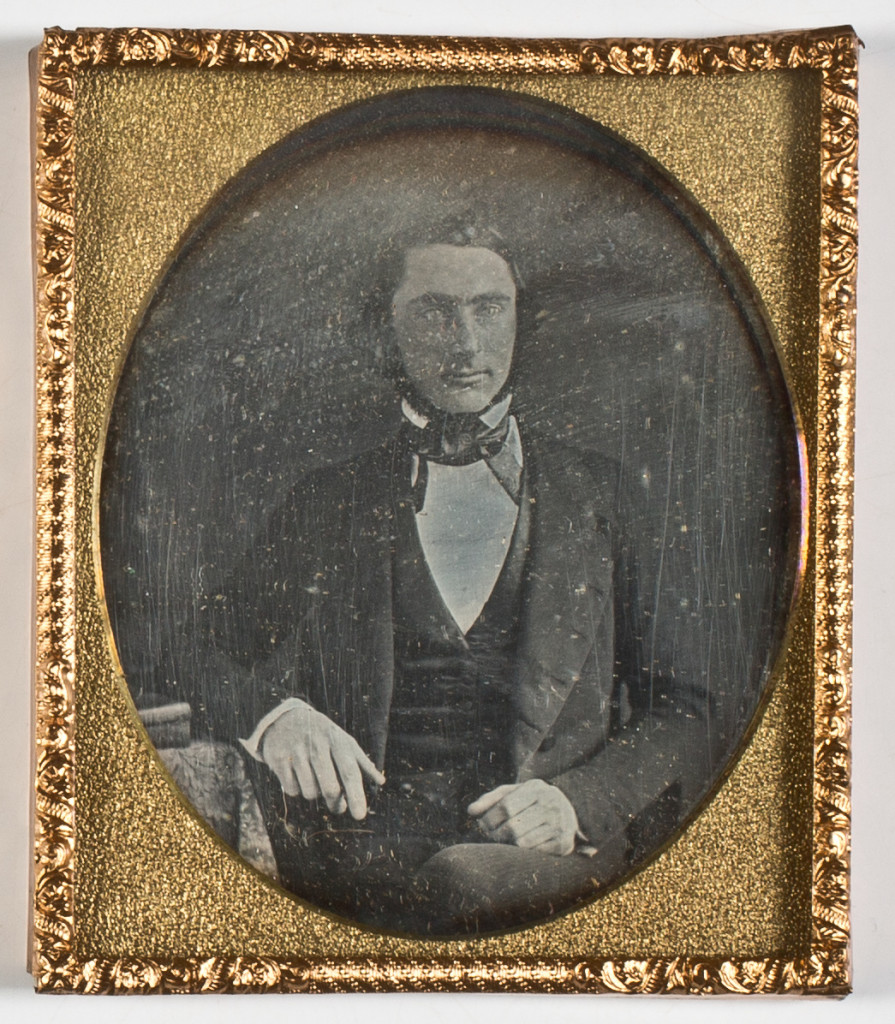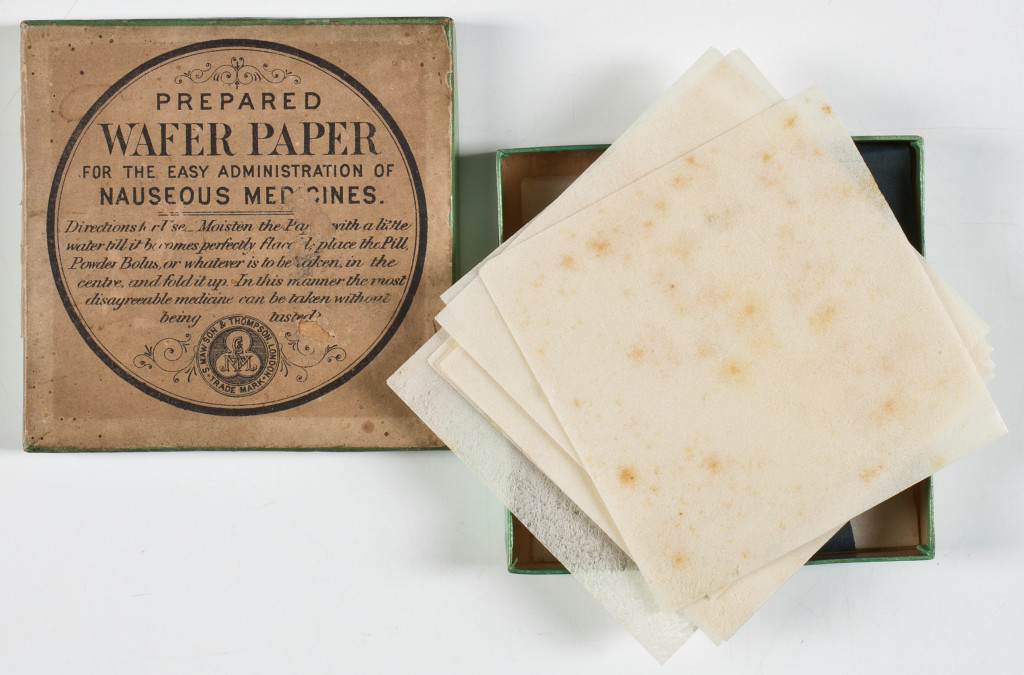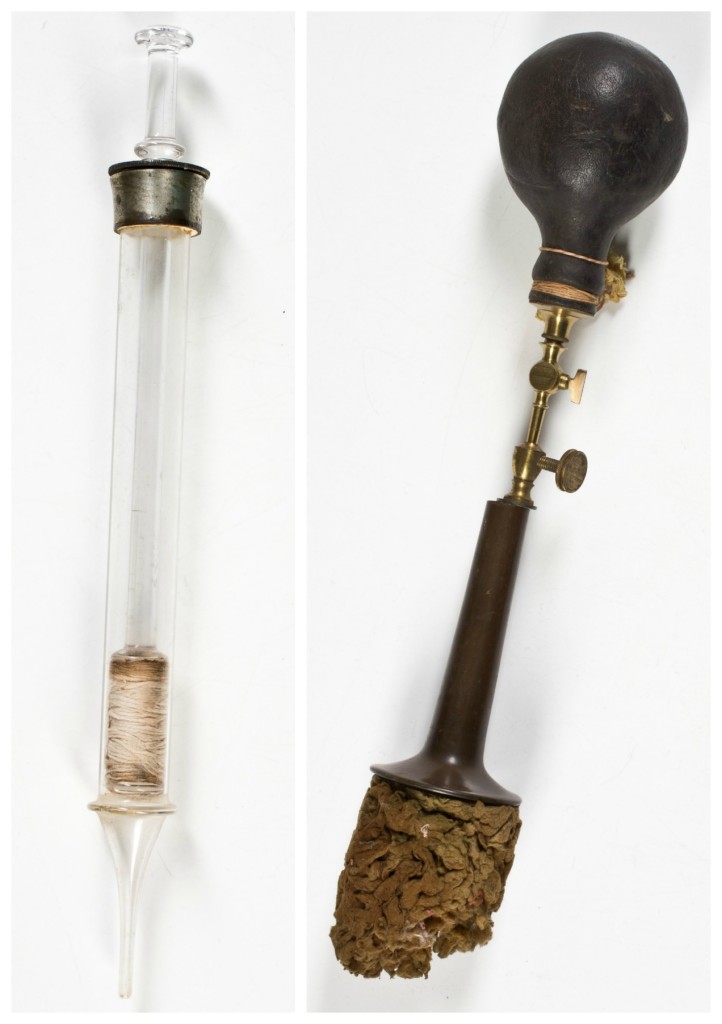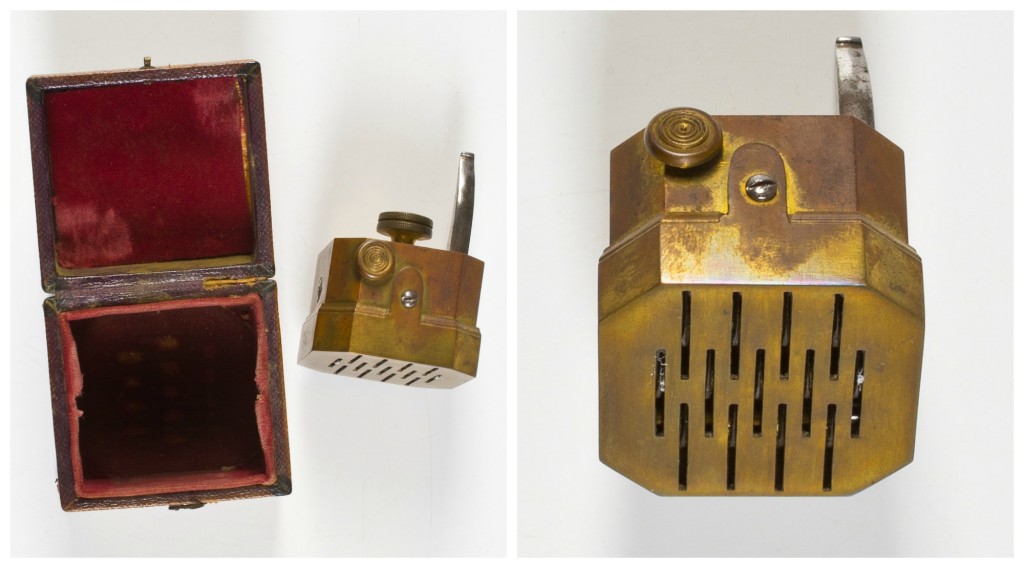 The Pike and Wright Collection, donated by Susan Pike Corcoran, has brought to AAS more than the typical materials of photographs, diaries, books, and letters. Along with the genealogical material, a collection of medical instruments used by Dr. Nathan Staples Pike (1819-1857) is now housed within the Graphic Arts Department. You might remember seeing Dr. Pike’s face (right) in the earlier post about the wonderful photographs that are part of this comprehensive family collection.
The Pike and Wright Collection, donated by Susan Pike Corcoran, has brought to AAS more than the typical materials of photographs, diaries, books, and letters. Along with the genealogical material, a collection of medical instruments used by Dr. Nathan Staples Pike (1819-1857) is now housed within the Graphic Arts Department. You might remember seeing Dr. Pike’s face (right) in the earlier post about the wonderful photographs that are part of this comprehensive family collection.
Cataloging and rehousing these items has been a challenge. Coming in one box, the collection was carefully unpacked and the items were placed in smaller boxes and individually wrapped in foam or bubble wrap to protect them. Luckily I have had some practice in rehousing objects at AAS (the games collection, glass plate negatives, and printing matrices to name a few) but the nature of the items and their use made them a little harder to handle. Latex gloves were a necessity with these tools!
Dr. Pike graduated from New York University in 1843 and practiced medicine in central and eastern Connecticut until his death in 1857 from tuberculosis, meaning this collection of about forty items likely date from before the Civil War. They demonstrate some of the common practices in general medicine at that time, including more specialized practices in the dental and obstetric fields. After handling these tools, and discovering what they were used for, I am very grateful to be living in the age of modern medicine! (This also means the following descriptions are a bit graphic, so continue reading at your own risk.)
Blood-letting, though becoming less popular in the nineteenth century than in previous centuries, was still used to treat common ailments and infections. This scarificator (below), which is housed in a velvet-lined wooden box, may have been used in conjunction with glass cups to bring blood to the surface. The scarificator, which has spring-loaded blades, would be placed on the skin and plunged in to bleed the patient.
 This set of wafer papers, imported from London, was used to create pills from whatever medicine the doctor would prescribe. The filling would be wrapped in the paper, allowing the patient to easily swallow the medication. The package states that using this paper meant even “the most disagreeable medicine can be taken without being tasted.”
This set of wafer papers, imported from London, was used to create pills from whatever medicine the doctor would prescribe. The filling would be wrapped in the paper, allowing the patient to easily swallow the medication. The package states that using this paper meant even “the most disagreeable medicine can be taken without being tasted.”
Another common occurrence for physicians of this time was to perform some dental work. This dental key, or extractor (below), would be inserted into the mouth, the small claw at the end would be placed around the tooth, and the handle would be turned, twisting the tooth until it was pulled out.
Dr. Pike not only practiced general medicine and dentistry, but according to his letters, he was also interested in and tried his hand at obstetrics. The hollow wooden tool below is possibly a Pinard horn, or fetal stethoscope, used to listen to the heart rate of a fetus in utero. The cup would be placed over the woman’s belly and listened to at the other end with the curved earpiece.
 Other items in Dr. Pike’s collection include glass and rubber syringes, a mortar and pestle, a large beaker and measuring cups, his leather saddle bag with many pockets for vials of medicine, a set of brass scales, and some other items whose use are unknown. The glass pieces are actually well-crafted and beautiful, as long as you don’t think of what they might have been used for! The second item to the right, with a bulb made of rubber or possibly an animal bladder and a sponge, may have been used to dispense ether or another anesthetic.
Other items in Dr. Pike’s collection include glass and rubber syringes, a mortar and pestle, a large beaker and measuring cups, his leather saddle bag with many pockets for vials of medicine, a set of brass scales, and some other items whose use are unknown. The glass pieces are actually well-crafted and beautiful, as long as you don’t think of what they might have been used for! The second item to the right, with a bulb made of rubber or possibly an animal bladder and a sponge, may have been used to dispense ether or another anesthetic.
While these items are definitely not the norm for a library that specializes in printed materials, having a collection of medical tools such as this, in addition to the family photographs, diaries, letters, and ledgers, paint a complete picture of a physician’s life in nineteenth-century New England. The story of Dr. Pike’s life and training as a physician and his travels to the southern states are within the collections of the Manuscripts Department, and will be the focus of upcoming blog posts, so stay tuned!




2 thoughts on “An Antebellum Physician’s Kit”